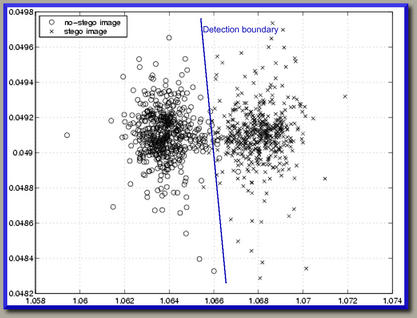

It seems to show (compared to the study on False Positives) that a False-Negative is more likely than a False-Positive. recipient can use the following syntax in order to extract the original confidential file from the output image file it was embedded into (Figure 4). Microdots and microfilm, a staple of war and spy movies, came about after the invention of photography (Arnold et al. One great thing about StegDetect is that it supports the ability to train the program on new, unknown algorithms as long as you have a clean set of images and a steg'ed set of images to 'train it' on.įor a savvy user, this sort of feature can help reduce the rate of False-Positives by improving the detection ability.Īnalysis of False-Negatives w/ StegDetect Invisible ink has been in use for centuries-for fun by children and students and for serious espionage by spies and terrorists.
#OUTGUESS ORIGINAL FULL#
Subscribers may view the full text of this article in its original form through TimesMachine. Step 4: Replace LSB of cover image with each bit of secret message one by one. 3: Calculate LSB of each pixels of cover image.
#OUTGUESS ORIGINAL ARCHIVE#
Nothing is perfect, and this is some research that was done on the reliability of StegDetect. Full text is unavailable for this digitized archive article. The algorithm to embed the text message using LSB technique 4 : 1: Read the cover image and text message which is to be hidden in the cover image. Outguess became widely known since Cicada 3301 posted their first image on 4chan in 2012. It stores the data by modifying redundant information, so that it doesn't cause visual changes to the image. StegDetect is a well known tool for detecting a variety of steganographic algorithms. Outguess is a steganography tools that allows a user to embedd hidden data inside of a JPEG-image file (and some other image formats). Original outguess by Niels Provos patched to be compilable with msys2 - GitHub - henkman/orig-outguess: Original outguess by Niels Provos patched to be. site to explain about the current status of the original upstream homepage. Steganography For The Computer Forensics ExaminerĪ good primer on steganography in relation to 'the real world'Īnalysis of False-Positives w/ StegDetect OutGuess is a universal tool for steganography that allows the insertion of. Many different methods and programs exist to try and suss out whether an image is steg'ed or not, but here's a couple links to research papers on the reliability of certain tools: A seed can be used to modify the behavior of the iterator. there's no guarantee it's THE ONLY needle in there! outguess acquiesce, address, assess, Bess, bless, bouillabaisse, caress, cess, chess, coalesce, compress, confess, convalesce, cress, deliquesce, digress. Outguess uses a generic iterator object to select which bits in the data should be modified. And worst of all, even if you find a needle. There are new methods of steganography being developed and theorized all the time, so detecting it is quite literally like looking for a needle in a haystack.


 0 kommentar(er)
0 kommentar(er)
